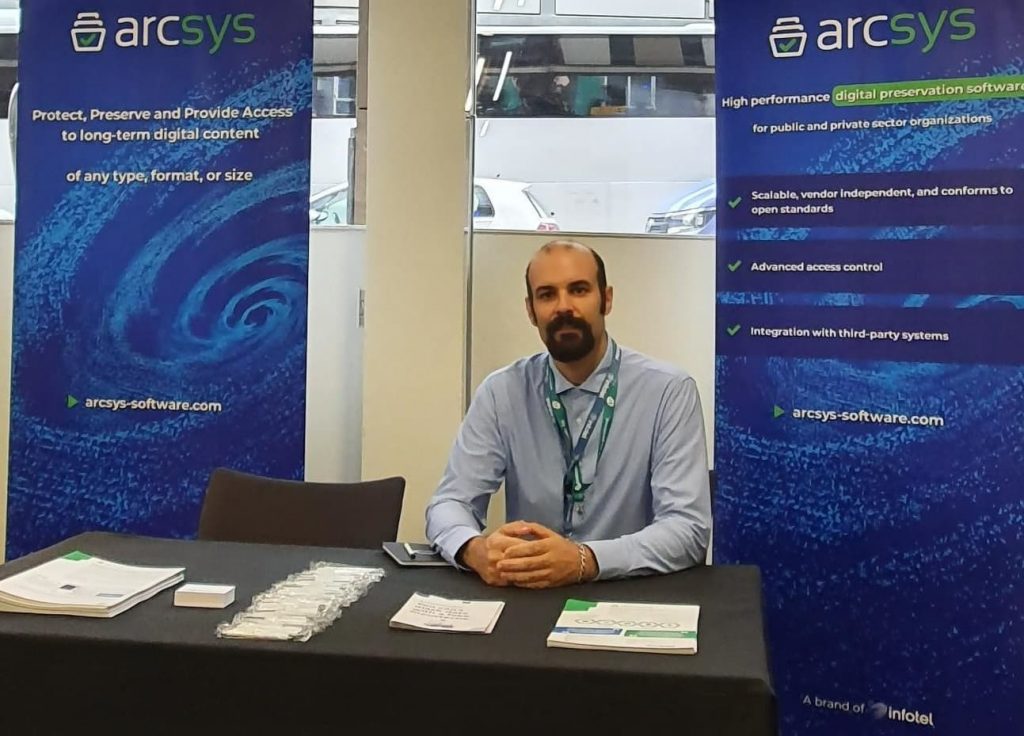
This post is an opinion article by Morgän ATTIAS, who provides some feedback and personal experience from recently attending iPRES 22 in Glasgow.

Let me start by saying that I was looking forward to this conference. Digital Preservation is a personal passion of mine, and iPRES is clearly the place to meet some of its best advocates, actors, and researchers. It was going to be my second time in Glasgow (the first time was earlier this year while attending IRMS). While I was introduced to the concept of a “proper Scottish welcome” as portrayed in the Uncharted movie, Glasgow has been very welcoming, both in terms of weather and of her people.
This was my second iPRES. My first being iPRES19 in Amsterdam. Just like the first one I am leaving this conference boosted and feeling both enriched by the information shared and the conversation with so many professionals in the field, and wanting to renew my efforts in helping to provide better tools and solutions to the digital preservation community. If you don’t know about iPRES I really encourage you to have a look at the proceeding which are made available to the greatest number of people. My feeling this year on the trends and topics, those that challenged me the most or that I connected to, are as follows:
Virtualization/Emulation is making a come back with projects such as Yale’s EaaSi. Another significant pragmatic example for the use of emulation which makes it so certainly a good remedy is that presented in a poster by the Canadian Center for Architecture which has in its collections many CAD files from various software that are no longer in use and may not easily be migrated to newer format.
DNA as storage, if you have talked to me about this subject you know I am skeptical, to make it short I am still not convinced that it is more effective than chiseling the information in marble (in terms of cost, size, storage density, and preservation of the information). My views were challenged on the topic and I have become more inclined to see it as a viable solution, this is definitely a topic that will remain on my radar.
Database preservation and around the SIARD file format. Some of the issues related to the handling of larger datasets and, for some, the lack of proper tools to manipulate and provide better access to those databases are a daily problem. There are definitely some R&D which could help improve those pain points, which lines well with some of the efforts we are making with Arcsys, so I hope I will soon be able to demonstrate some of the ways we solve those problems.
Last but not least, we had a lot of conversations about video. With many specialists in the AV community present I should not be surprised, but clearly the digital preservation and access to videos still have many ways to be improved not only on the technical aspects in terms of compression, handling large files, streaming, but also in user experience and accessibility such as linking to specific timestamp of a video, providing accurate and useable transcripts, providing subtitles and different audio tracks in a seamless fashion. Aside from those rather technical aspects, what iPRES is about is the people and connections.
The last day of the conference we are given the opportunity to visit some of the digital preservation sites in the area. That is also a special treat to be welcome on the sites where the magic happens. This year I was there to visit the National Scottish Library located in Kelvin hall in Glasgow. It really made me think of the famous quote from Thales “a sound mind in a sound body” for the place includes a public gym and some sports fields first until you are lured into a long hallway with a wall covered by a large screen broadcasting some of the video from the NSL’s collections. Visiting the offices and seeing the machinery and people at work to digitalize and preserve audio and video content was very interesting.

I also got to visit the Riverside Museum (which used to reside in Kelvin hall) but is now hosted in a stunning building by architect Dame Zaha Hadid. The collection was presented to us by one of the curators. I was personally quite impressed by the real locomotives and cars displayed. But since I am particularly interested in the experiences and how to convey those experiences from the past to current and future generation the exhibits that was the most innovative to me was the subway train ride in which you can sit in the train and see passengers from the past, with a clever usage of a screen (and thankfully some subtitle for I would have not been able to understand the accents without them). I truly look forward to the next iPRES and being able to continue conversations at the conference, during organized dinners, or as organic dinner/nights at a pub arguing about the best methods of digital preservations or hearing about the best tools to achieve them.